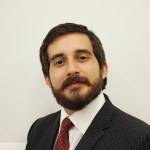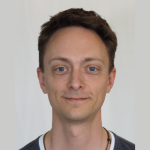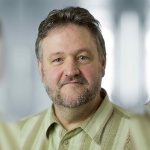Project description
Music and musical instruments have always fascinated people. Some instruments, such as the violins of Stradivari or the guitars of Torres, have given rise to veritable myths. For many musicians, the sound of these instruments remains unrivaled to this day. This myth persists, although in the meantime several studies have proven that violin makers today are capable of building instruments of comparable quality. Nevertheless, musicians are able to detect very small differences between instruments, and thus even seemingly identical instruments differ audibly in sound. In the case of carefully crafted instruments of identical design, these differences can be traced back to the variability of the material parameters of the woods used.
At the Institute of Engineering and Computational Mechanics, methods are developed to identify the material parameters of individual components and entire guitars. Methods of experimental modal analysis are used to identify the eigenmodes, eigenfrequencies and modal damping of components and complete instruments. Measurements are made almost entirely contactless via laser Doppler vibrometry. These modal parameters are then used to identify the material parameters of a detailed finite element model via model updating procedures. If the model is detailed enough, conclusions can be drawn about the actual density and stiffness parameters of the woods used in the instrument.
Detailed computer models of guitars are physically challenging. In addition to the complex geometry, orthotropic, i.e. direction-dependent, material modeling and modeling of the fluid-structure interaction between the guitar body and the enclosed air must be accomplished. Methods of parametric model order reduction and methods of uncertainty quantification developed at the institute are also used to identify the material parameters. The models developed at the institute can then be used as virtual prototypes to indicate to instrument manufacturers how they can specifically influence and improve their instruments. This is particularly beneficial from the point of view that two geometrically identical instruments can sound very different.
- Cillo, P.; Ziegler, P.; Eberhard, P.: Geometrical parameterization of a finite element model to account for material variability in classical guitar design.
Proceedings of the International Conference on Noise and Vibration Engineering 2024, Leuven, September 09-11, 2024.
[ Preprint ResearchGate, Proceedings ] - Brauchler, A.; Gonzalez, S.; Vierneisel, M.; Ziegler, P.; Antonacci, F.; Sarti, A.; Eberhard, P.: Model-Predicted Geometry Variations to Compensate Material Variability in the Design of Classical Guitars. Scientific Reports, Vol. 13, No. 1, p. 12766, 2023.
[ DOI: 10.21203/rs.3.rs-2014605/v1 ] - Brauchler, A; Hose, D.; Ziegler, P.; Hanss, M.; Eberhard, P.: Distinguishing Geometrically Identical Instruments: Possibilistic Identification of Material Parameters in a Parametrically Model Order Reduced Finite Element Model of a Classical Guitar. Journal of Sound and Vibration, Vol. 535, p. 117071, 2022.
[ DOI: 10.1016/j.jsv.2022.117071 ] - Brauchler, A; Ziegler, P.; Eberhard, P.: An Entirely Reverse-Engineered Finite Element Model of a Classical Guitar in Comparison with Experimental Data. The Journal of the Acoustical Society of America, Vol. 149, No. 6, p. 4450-4462, 2021.
[ DOI: 10.1121/10.0005310 ] - Brauchler, A; Ziegler, P.; Eberhard, P.: Examination of Polarization Coupling in a Plucked Musical Instrument String via Experiments and Simulations. Acta Acustica, Vol. 4, No. 3, Paper No. 9 (12 pages), 2020.
[ DOI: 10.1051/aacus/2020008]
This research project is supported by the German Research Foundation DFG (Project No. 455440338). This support is highly appreciated.
Kontakt

Pierfrancesco Cillo
M.Sc.
Pascal Ziegler
Dr.-Ing., Akademischer Oberrat
Peter Eberhard
Prof. Dr.-Ing. Prof. E.h.- Profile page
- +49 711 685 66388
- Write e-mail
- Pfaffenwaldring 9, 70569 D-Stuttgart




